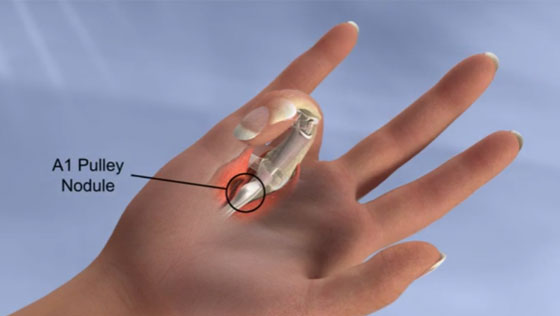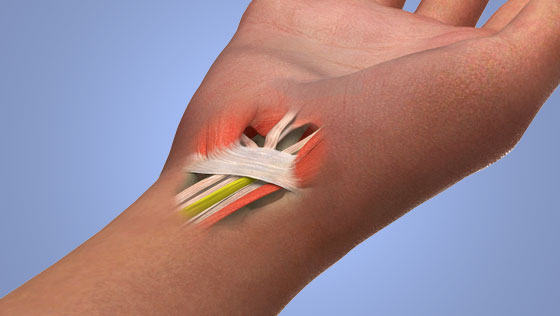What is Carpal Tunnel Release?
Carpal tunnel release is a surgical procedure performed to treat carpal tunnel syndrome, a condition in the hand and wrist caused by excessive pressure on the median nerve.
Key statistics about Carpal Tunnel Release
- Carpal tunnel syndrome is the most commonly occurring nerve compression syndrome[1]
- 3.5% of men and 11% of women are expected to develop carpal tunnel syndrome each year[1]
- Carpal tunnel release results in good or excellent outcomes for approximately 70-90% of patients[2]
Carpal Tunnel Anatomy
The median nerve runs from the arm into the hand through the carpal tunnel, which is a narrow channel formed by carpal bones and the transverse carpal ligament. The median nerve helps control forearm, wrist, hand, and finger movement and provides sensation to parts of the hand and forearm.

Why is Carpal Tunnel Release performed?
Carpal tunnel release is performed to alleviate symptoms associated with carpal tunnel syndrome. Carpal tunnel syndrome occurs when the median nerve is compressed in the carpal tunnel, and can result in numbness and tingling in the fingers, as well as pain in the wrist and forearm. In severe cases, the muscles in the thumb can become weak and cause functional problems.
Who needs Carpal Tunnel Release?
Carpal tunnel syndrome occurs when there is a narrowing of the carpal tunnel, leading to excessive pressure on the median nerve which can be the result of:
- Excessive or repetitive hand use
- Fluid retention or wrist swelling due to traumatic injury or pregnancy
- Nerve changes as a result of diabetes, hypothyroidism, or alcoholism
- Wrist swelling due to inflammatory conditions such as rheumatoid arthritis
- Bone deformity due to arthritis
- Cysts or tumors
Individuals with carpal tunnel syndrome who experience pain and dysfunction that has not responded to nonsurgical treatment may undergo carpal tunnel release.
How is Carpal Tunnel Release performed?
Depending upon the specific condition and surgeon preference, carpal tunnel release can be performed as an open procedure or as a minimally-invasive endoscopic procedure. A camera attached to an instrument called an endoscope is utilized during the procedure.
In endoscopic carpal tunnel release:
- The surgeon will make small incisions to access the carpal tunnel.
- The endoscope will be inserted into one of the incisions, allowing the surgeon to visualize the tissues beneath the skin.
- The transverse carpal ligament is cut to release the carpal tunnel and relieve the pressure on the median nerve.
- Finally, instruments are removed and the incisions are closed using sutures.

What are the risks of Carpal Tunnel Release?
It is uncommon to experience complications from carpal tunnel release but potential risks may include:
- Infection
- Bleeding
- Nerve or blood vessel damage
How long does it take to recover from Carpal Tunnel Release?
-
24 hours after surgery
Most patients are able to return home the same day as their procedure. Pain medication may be prescribed and a splint may be provided to restrict wrist movement. -
2 weeks after surgery
The affected hand should be iced and elevated. Most individuals discontinue use of the splint, and any non-dissolvable sutures are removed and bruising and swelling begin to subside. Physical therapy will begin to strengthen the wrist and hand. -
6-12 weeks after surgery
Most patients can resume most daily activities. -
6-12 months after surgery
Most patients have regained full hand strength and range of motion and have fully recovered from carpal tunnel release.
What are the results of Carpal Tunnel Release?
Carpal tunnel release is a safe and effective procedure to alleviate the symptoms of carpal tunnel syndrome. Carpal tunnel release results in pain relief and symptom resolution with minimal complications, and has a high degree of patient satisfaction. Carpal tunnel release results in good or excellent outcomes for approximately 70-90% of patients[2].
Find an Orthopedic Doctor in Your Area




